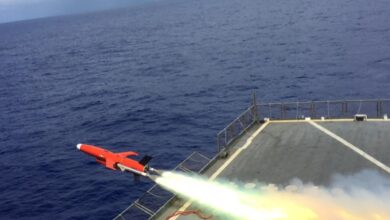Turkey Hits PKK in Iraq: Why Now and How Far Could It Go?
Turkey launched a rare ground assault into northern Iraq Wednesday, deploying special forces against rebels from the Kurdistan Workers’ Party (PKK) which is blacklisted by Ankara as a “terrorist” group.
The Turkish defense ministry said “commandos” moved in, supported by drones and helicopters, following a bombardment with rocket launchers and artillery guns that hit more than 150 targets.
The semi-autonomous Kurdish authorities which govern the area have kept mum on the vast operation which began early Wednesday despite protestations from Baghdad.
What Are the PKK’s Ties to Iraq?
The PKK has fought an insurgency against the Turkish state since 1984, demanding autonomy for Kurds living in the country’s southeast and in other parts of the Middle East. PKK rebels use the rugged mountains of neighboring northern Iraq as a rear base, to the discomfort of the Kurdish administration in northern Iraq (KRG).
“The PKK is considered an enemy by Iraqi Kurdistan’s autonomous authorities because it presents itself as the sole representative of the Kurdish question,” said Adel Bakawan, an expert in regional Kurdish affairs.
It is seen as a rival by both the Kurdish Democratic Party (KDP), whose stronghold is the regional capital Arbil, as well as the competing Patriotic Union of Kurdistan (PUK), which is strongest in the northeastern city of Sulaimaniyah.
Baghdad has slammed the PKK’s presence in Kurdistan, as well as in disputed areas claimed by both Kurdish and federal authorities, as a “declaration of war.” But neither the KRG nor federal forces have been able to oust PKK rebels, who have kept up their presence in the north through effective guerilla tactics and good ties to Iraq’s powerful neighbor Iran.
As a result, said Bakawan, “it is unimaginable that Turkish forces entered northern Iraq without the active cooperation of local Kurdish authorities.”
Why Now?
Turkey has regularly targeted PKK military camps in northern Iraq by ground and air, including in large-scale operations in 2007 and 2018.
The recent assault may be an attempt by Turkish President Recep Tayyip Erdogan to project power, Bakawan said. “Turkey is deeply engaged in the conflicts of Syria and Libya, and hopes to get involved in Yemen,” he told AFP. “It aims to present itself as an essential power when trying to resolve conflicts in the Middle East — and Iraq forms a part of this,” Bakawan added.

But the assault also comes at a critical time for the Kurdish region, hit hard by falling crude prices and unable to pay public salaries or foreign debts.
Arbil borrowed nearly $5 billion from Turkey in 2014 to pay public workers and also relies on a pipeline via Turkey as its only way to export crude oil.
What Has the Reaction Been?
A few days before it launched its ground assault, Turkey conducted air raids against alleged PKK camps in the northern Iraqi areas of Makhmur and Sinjar.
Iraq’s foreign affairs ministry summoned Turkish ambassador Fatih Yildiz on Tuesday, slamming the strikes as a violation of its sovereignty. But the following morning, Turkey nonetheless deployed its special forces across the border.
Yildiz said he had informed Iraqi officials that if Baghdad did not take action against the rebels, Ankara would continue to “fight the PKK wherever it is.”
Iraqi-Kurdish analyst Hoshyar Malo accused Iraq of a “timid response” to Turkey’s initial air operation. There has been no comment from Iraq’s new Foreign Minister Fuad Hussein, who is close to KDP head Masoud Barzani.
While the KRG may see the Turkish assault as a way to get rid of its PKK rival, its tacit approval could be costly. “Kurdish authorities are getting weaker as representatives of a political, Kurdish identity,” said Bakawan.












